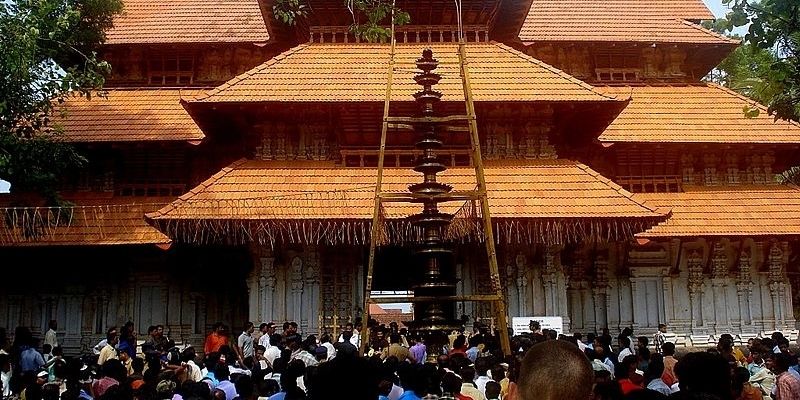
The Vadakkumnathan Temple - the Pride of India
Temples and monuments are abound in India, but their upkeep and conservation demands intense efforts done with dedication.The Vadukkamnathan Temple in Kerala is an example of the concerted efforts taken by authorities to preserve the pristine beauty of the temple. It is no wonder then, that the 1,200 year old Vadakkumnathan temple bagged the UNESCO Asia- Pacific Heritage award for Cultural Heritage Conservation this year. The majestic temple is a sheer marvel in wood and stone which stands in the centre of Thrissur district. The unique fact about this temple is that its mural paintings, wood carvings and idols and massive gateways facing all four directions have remained the same as reflected in the hundred year old photograph. It is a miracle, how the temple which is made of wood could withstand termites as well as the weather, Kerala being a state that receives heavy rainfall during the monsoons. It was a herculean task for the team of archaeologists, craftsmen and others to renovate the temple and restore it to its original glory. Normally, with cement and concrete taking over the construction, the national monuments got a ' modern facelift'. The dwindling number of skilled craftsmen were also a matter of grave concern. Therefore, most of the monuments were in ruins. The same was the case of the Vadakkumnathan temple until the Archaeological Survey of India took over its maintenance in 1997 and started part by part renovation of the temple. A private company also sponsored the renovation. The temple was bestowed with the award for conservation which employed age old rituals and conservation techniques drawn from Vaastu Shastra that ensured that the spirit of the place resonates through the site. Traditional method of conservation known as ' Jeernodharana' was adopted. All ritualistic principles were followed and conservation was carried in an authentic manner after consulting astrologers and keeping in tune with Vaastu Shastra. The use of cement, ceramic tiles or paint was out of question as it has led to the ruin of many historical monuments in the country. Therefore, original materials such as, a mixture of lime, jaggery and materials like kadukka and oonjal valli ( a creeper which is soaked in a particular mixture and later used in construction material). The damaged wood was meticuluosly reconstructed by skilled craftsmen and it was coated with a special oil made up of eight ingredients to protect wood from termites. Utmost care was taken to keep the original structure in tact. Detailed research was carried out and a separate strategy was chalked out for each shrine. Around 300 craftsmen worked for a decade, as work on each part of the temple took three months and at times years to bring it to its actual state. Apart from the beautiful murals, the temple also has an idol of Shivlinga which nobody has seen as it is covered in a mount of ghee which is 9 feet tall. Another interesting fact is that 'Koothambalan', situated within the temple is made entirely of wood, but there is not a single nail. The structure has made use of slots. Now that the temple has got the most coveted award, it has come into the international arena. The award will also motivate the temple authorities to maintain the temple up to its standards as conservation is a continuous process. This temple in God's own country has really made every Indian proud.
